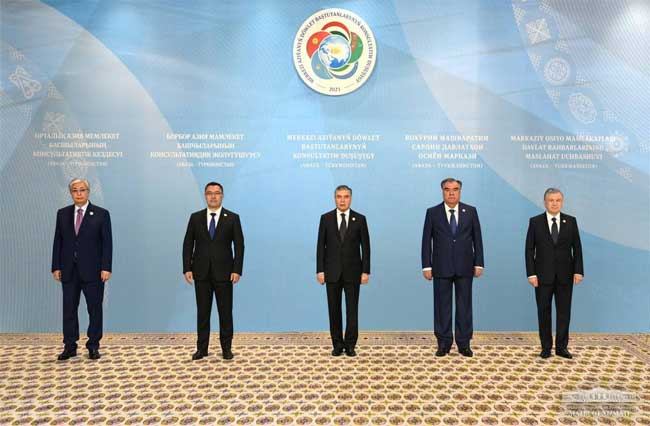Dr Pravesh Kumar Gupta
Research Associate (Central Asia)
Vivekananda International Foundation
This year marks the three decades of independence of the Central Asian Republics (CARs). Since the collapse of the Soviet Union, CARs faced multiple challenges in their socio-economic, political, and security spheres. However, by overcoming all these challenges, these countries have made significant progress. On the other hand, Interstate issues concerning the sharing of resources and demarcation of borders have adversely affected regional cooperation in Central Asia. Since coming into power in December 2016, President Shavkat Mirziyoev seemed determined to buckle up the challenges of regional integration in a manner that would ensure a vibrant and incorporating atmosphere internally and externally as well.

President Mirziyoyev, far sighting the importance of regional cooperation, has given priority to his instant Central Asian neighbours and has also ensured to reach a consensus on the bilateral disputes through a comprehensive conflict resilient approach. However, as a result, his efforts of re-channeling the regional cooperation among the Central Asian states seemed to be fructifying. In this direction, one of the significant achievements was to convene the ‘Consultative Meeting’ of the Heads of all the Central Asian Republics.
At the invitation of the President of Turkmenistan, Gurbanguly Berdimuhamedow, Heads of State of Kazakhstan, Kyrgyzstan, Uzbekistan, and Tajikistan, participated in the ‘Third Consultative Meeting of the Central Asian Leaders’ in Avaza Turkmenistan on August 6, 2021. The meeting was scheduled to be held in 2020, but it got postponed due to the COVID-19 pandemic. The other two meetings were held in 2018 and 2019 in Nur Sultan (Kazakhstan) and Tashkent (Uzbekistan).

Some of the issues which need the most attention of the Central Asia countries are the health and economic consequences of the COVID-19 pandemic and rising instability in Afghanistan. During the Pandemic, Central Asian countries have shown a notable response to help each other in these difficult times. For example, Uzbekistan was the first country in Central Asia to offer help to Tajikistan to curb the impact of coronavirus. The cooperation during the pandemic and post-pandemic economic recovery was discussed in this meeting. All the leaders agreed that a regional approach has the potential to curb the menace of the pandemic.
The Afghanistan issue has grabbed attention during the meeting. Kazakhstan’s President, Tokayev, has also highlighted the need to have a stable region essential for growth and development. Uzbekistan, Tajikistan, and Turkmenistan share a border with Afghanistan, and recent violence and instability in the country directly impact these countries. These frontline states are engaged in the reconstruction and development of Afghanistan by investing in the trade, transport, and energy sector. In this context, the security cooperation within the Central Asian countries will showcase another positive development of regional integration efforts.
During his speech, the Uzbek President highlighted the need to develop the transport and connectivity corridors to get rid of their geographic landlockedness. Considering the importance of connectivity, the Uzbek government organized a High-Level Conference on Regional Security and connectivity in South and Central Asia on July 15-16, 2021. This has proved to be a milestone in this regard. The third consultative meeting also brought out that Regional connectivity projects need to be expedited for a smooth and better outreach. The leaders also acknowledged that intra-regional trade had witnessed an extraordinary growth in recent years that needs to be carried forward, and collective efforts are required to enhance it further. Cooperation in the energy sector was also discussed in this meeting. Countries like Kyrgyzstan and Tajikistan that face an energy crisis in winter will primarily benefit from the increased cooperation in this sector.
Central Asian countries share a collective ethnic, cultural, and linguistic heritage. And this was highlighted in the third consultative meeting at National Tourist Zone in Avaza when an International exhibition of national products of the countries of Central Asia and the International festival of national dishes in the region were displayed. This phenomenon can increase people-to-people contact, development, and promotion of the tourism sector of each republic. Also, it will boost the sense of belongingness which is a significant aspect of regional integration and development.
To conclude, it will be right that a regional dialogue to revamp the effective cooperation mechanism between the Central Asian republics is fundamental for terminating the long-standing regional divisions and for a shared future. On the initiative of Uzbekistan and a positive response from other stakeholders, the pace of regional integration in Central Asia is gaining momentum. And if this collective dialogue prevails persistently, it will bear some outstanding results in coming years.
